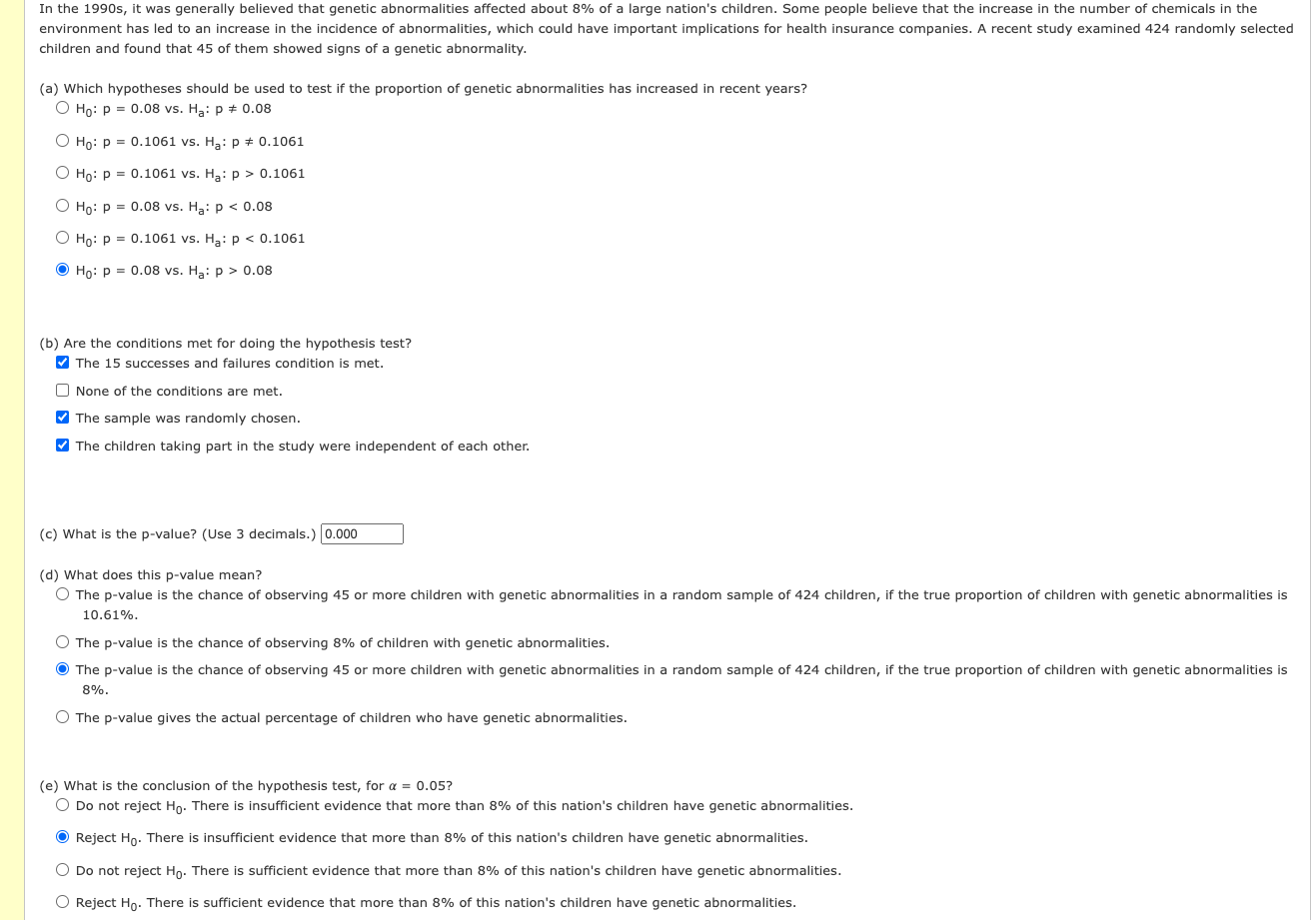Home /
Expert Answers /
Statistics and Probability /
in-the-1990s-it-was-generally-believed-that-genetic-abnormalities-affected-about-8-of-a-large-nat-pa201
(Solved): In the 1990s, it was generally believed that genetic abnormalities affected about 8% of a large nat ...
In the 1990s, it was generally believed that genetic abnormalities affected about 8% of a large nation's children. Some people believe that the increase in the number of chemicals in the environment has led to an increase in the incidence of abnormalities, which could have important implications for health insurance companies. A recent study examined 424 randomly selected children and found that 45 of them showed signs of a genetic abnormality.In the 1990 s, it was generally believed that genetic abnormalities affected about 8% of a large nation's children. Some people believe that the increase in the number of chemicals in the
environment has led to an increase in the incidence of abnormalities, which could have important implications for health insurance companies. A recent study examined 424 randomly selected
children and found that 45 of them showed signs of a genetic abnormality.
(a) Which hypotheses should be used to test if the proportion of genetic abnormalities has increased in recent years?
H_(0):p=0.08 vs. H_(a):p!=0.08
H_(0):p=0.1061 vs. H_(a):p!=0.1061
H_(0):p=0.1061 vs. H_(a):p>0.1061
H_(0):p=0.08 vs. H_(a):p<0.08
H_(0):p=0.1061 vs. H_(a):p<0.1061
H_(0):p=0.08 vs. H_(a):p>0.08
(b) Are the conditions met for doing the hypothesis test?
The 15 successes and failures condition is met.
None of the conditions are met.
The sample was randomly chosen.
The children taking part in the study were independent of each other.
(c) What is the p -value? (Use 3 decimals.)
(d) What does this p-value mean?
The p-value is the chance of observing 45 or more children with genetic abnormalities in a random sample of 424 children, if the true proportion of children with genetic abnormalities is
10.61%.
The p-value is the chance of observing 8% of children with genetic abnormalities.
The p-value is the chance of observing 45 or more children with genetic abnormalities in a random sample of 424 children, if the true proportion of children with genetic abnormalities is
8%.
The p -value gives the actual percentage of children who have genetic abnormalities.
(e) What is the conclusion of the hypothesis test, for \alpha =0.05 ?
Do not reject H_(0). There is insufficient evidence that more than 8% of this nation's children have genetic abnormalities.
Reject H_(0). There is insufficient evidence that more than 8% of this nation's children have genetic abnormalities.
Do not reject H_(0). There is sufficient evidence that more than 8% of this nation's children have genetic abnormalities.
Reject H_(0). There is sufficient evidence that more than 8% of this nation's children have genetic abnormalities.